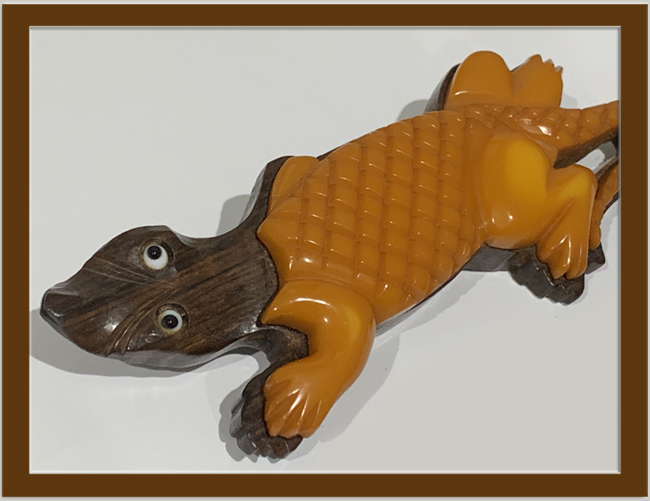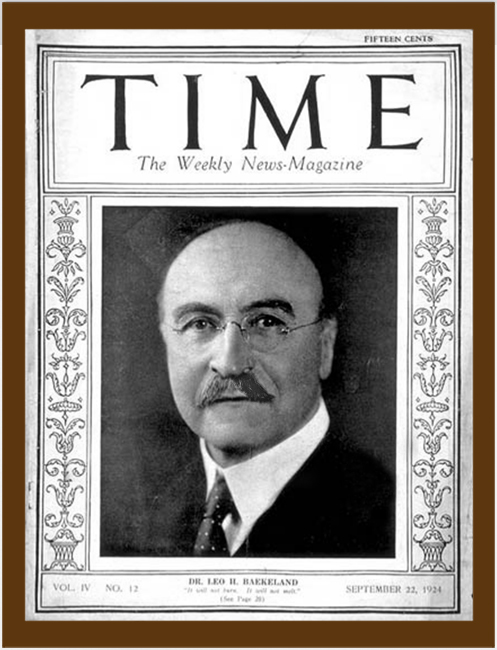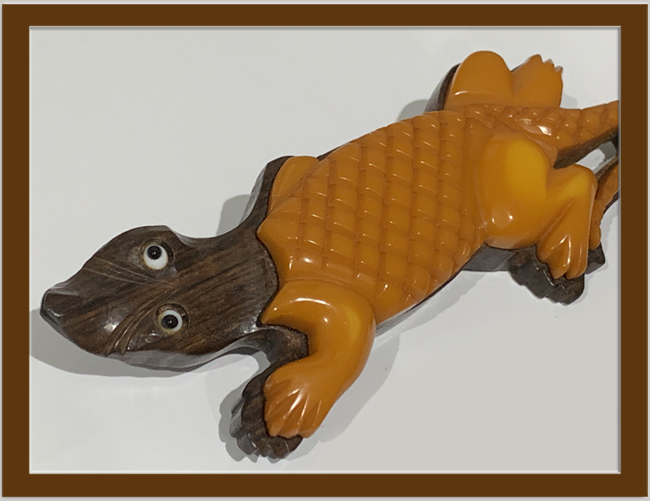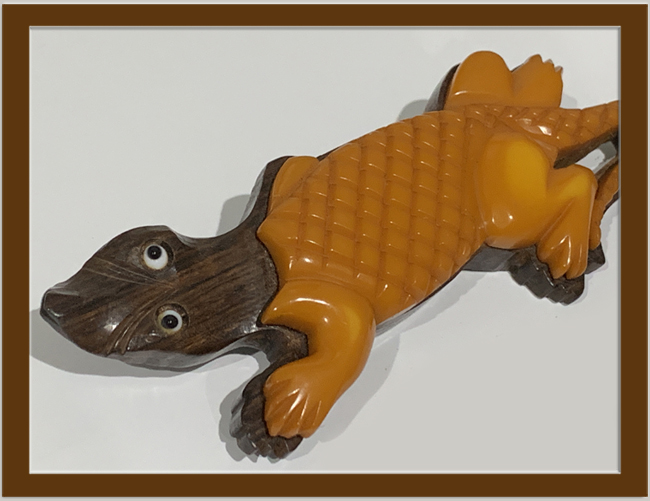Return To Previous Page
Bakelite Butterscotch Carved Aligator Brooch
Wood laminated Bakelite jewelry was manufactured in the 1930’s. This process most certainly included some of the zaniest characters and designs. This 4" charming googly eyed alligator is no exception. Very well crafted and in fantastic shape he will be a conversation starter like no other! ID-UNB3
A Bit of History about Bakelite —
Bakelite most popular during the Art Deco period, jewelry which began in 1909
and lasted until the 1940s. However, the height of Bakelite jewelry was the late
1930s, up until the end of the Art Deco period. These pieces were created as
costume jewelry, as a way to dress up clothing or an outfit without spending a
lot of money. The pieces were popular during the heyday of the Art Deco period
and many of the pieces remain popular today.
Dr. Leo Hendrik Arthur Baekeland, a Belgian/American chemist, invented Bakelite.
He is best known for the inventions of Velox photographic paper in 1899 and
Bakelite in 1907. Velox, a new kind of photographic paper, could record images
in artificial light. He sold the rights to George Eastman, became quite wealthy
, built a chemical lab in his plush new home, and was off to discover better
things. After years of experimenting, Baekeland in 1907 discovered how to get
two chemicals, phenol and formaldehyde, to combine to form a hard,
heat-resistant, acid-resistant substance that could be molded into any desired
shape before it set. Baekeland had invented the first synthetic plastic. He
called it Bakelite, and set up his own corporation, the General Bakelite
Company, to produce it. Baekeland's process patent for making insoluble products
of phenol and formaldehyde was filed in July 1907, and granted on December 7,
1909. Baekeland officially announced his achievement at a meeting of the New York
section of the American Chemical Society on 5 February 1909.
Bakelite was cheap, easy to manufacture and mold, and in the dawning age of
household electricity, it had the further advantage of having an extremely high
resistance to electrical current. Soon it was being used for insulators, pot
handles, kitchen-stove knobs, radios and vacuum tube sockets–anywhere that one
needed a material that was impervious to heat, chemicals, and electricity. The
original Bakelite was always the same color, dark chocolate, but when the patents
expired in 1927, we soon had other manufacturers with their own phenolic resins,
now in a variety of colors. So, Bakelite became "bakelite", a generic term for
any hard phenolic plastic, and it was used for hairbrushes, table knife handles,
costume jewelry, even Mahjong tiles (sold on this page). It was the first
ubiquitous plastic. Baekeland became famous enough to make the cover of Time
Magazine on Sep. 22, 1924. The caption read: "It will not burn. It will not melt."
Having trouble with the small sizes of
yesteryear? Well, most of us do!
The ladies were smaller than the women of today.
NO Problem, be sure to check out our necklace extenders.
The ladies were smaller than the women of today.
NO Problem, be sure to check out our necklace extenders.





